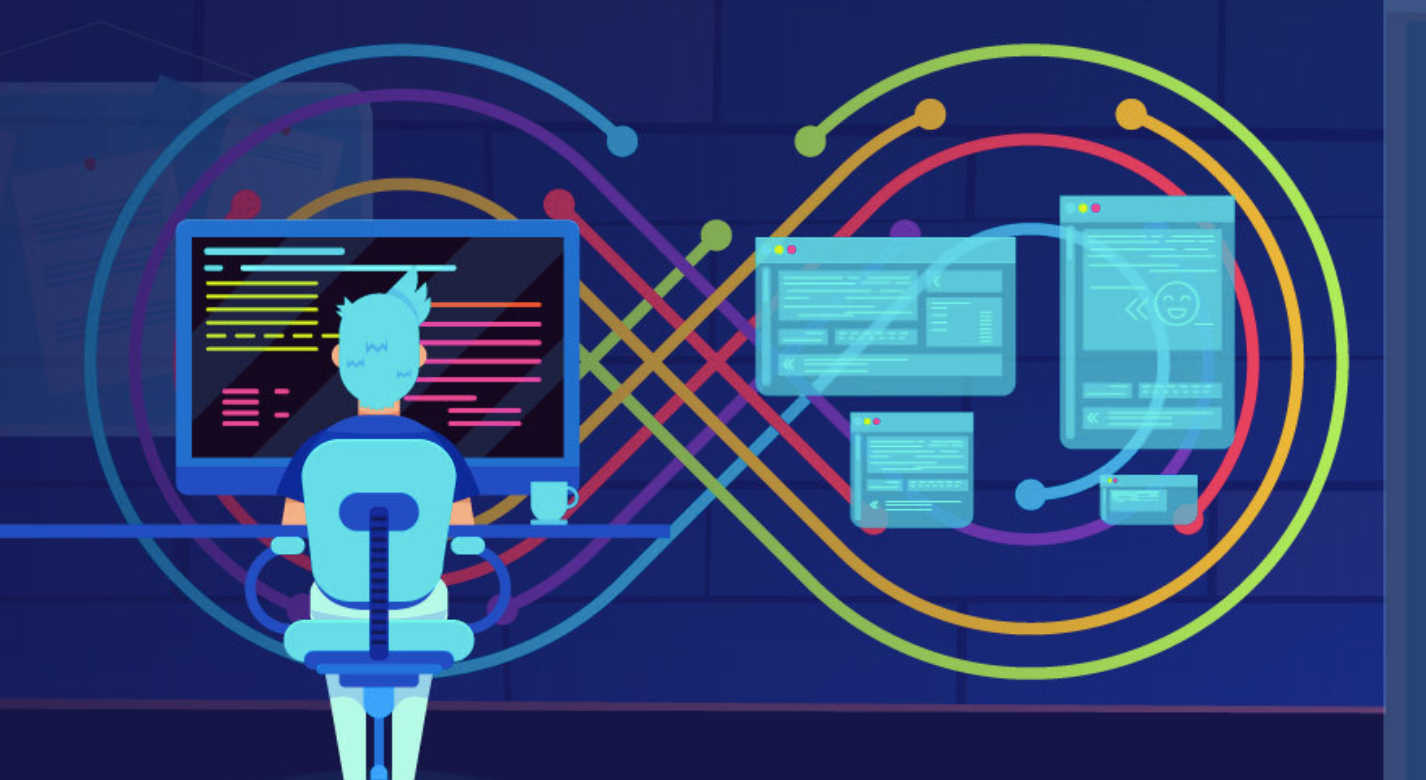In the software development world, DevOps has become a hot topic, and for a good reason. It allows developers to be more productive and improve infrastructure stability. But like many other emerging concepts, it doesn’t come without its own set of challenges. So here we’ll cover what DevOps is and how to implement it correctly.
What is DevOps?
Developers and IT teams working together towards a common goal: delivering quality software as fast as possible with the least amount of errors possible. However, both have different ways of thinking, so they often work in isolation from each other, using completely different tools to accomplish their tasks. The idea behind DevOps is combining those two teams into one cohesive group that works towards the same goal as if they were never separated in the first place.
DevOps is a methodology that stresses on the importance of communication, collaboration, integration, automation, and cooperation between all members of an IT product team. DevOps also aims to improve the speed with which products are developed.
Why Do I Need It?
Using DevOps can help you, as a company or developer, increase your velocity while maintaining stability. The main reason behind any software project’s failure is because it takes too long. There are many ways to implement DevOps, either through hiring freelancers or third-party agencies to get these tools in place for you. Unfortunately, using third parties could open up room for errors if they don’t know how to use the tools correctly. It will take time for them to learn how everything works together, time that you don’t have. It’s best to hire someone who specializes in DevOps, understands the tools, and is willing to work with you.
How to implement DevOps?
Cultural shift within the company
First, you’ll need to get everyone on board. This means sales, marketing, the C-suite, and of course, your development team. Your stakeholders will have to understand that DevOps isn’t just about updating some scripts or changing how developers write code. If you want to implement a full-blown DevOps structure, then a cultural shift in the company must happen first.
Constant Integration
It’s important to automate your delivery cycle. It may seem like overkill, but when you start automating this process, it will become an essential part of your workflow. You’ll be able to push updates much faster than ever before, without having to worry about breaking anything in the process. Automation is key here, so think ASAP (Automate, Simplify and Predict) when approaching this problem.
Continuous Testing
The next thing that DevOps brings into the equation is continuous integration and testing. Developers can’t just write code and hope for the best anymore because, in most cases, if their code breaks something in production, then they’re fired. That means tests must be written for any new features or bug fixes, along with automated regression tests that run whenever code is pushed.
Feedback Loops
After you’ve done all this work and automated your process, it’s time to reap the rewards. Feedback loops are best when they’re fast, and stakeholders should be alerted about any new features or bug fixes as soon as they’re pushed. Your company must view DevOps as a long-term investment that will help them in the future when it comes to the continuous delivery of software.
Conclusion
There are many tools to choose from when it comes to implementing DevOps. It’s best to slowly start integrating them into your existing workflow rather than changing everything at once. This way, you’ll notice how things work and why the new tools were implemented in the first place.

